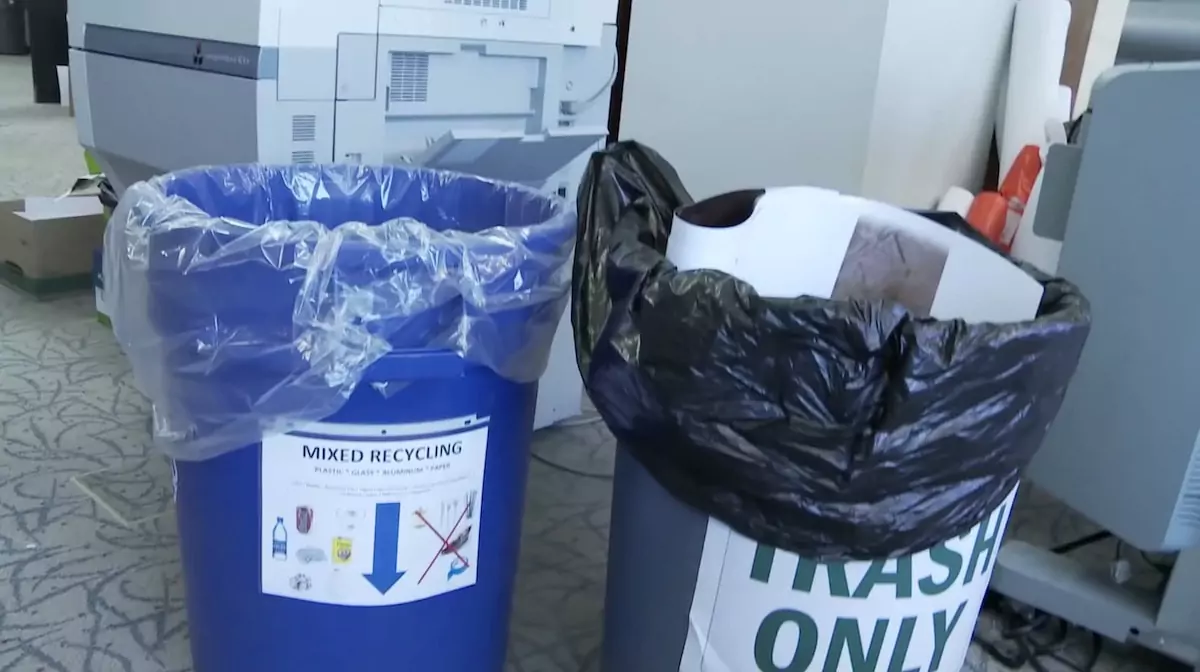Filmmaking by its very nature is very counteractive toward sustainability. Sets and props are temporarily built, special effects cause chaos, and don’t get us started on plastic water bottles. But green film production is not a myth. Being sustainable with your productions may seem like a daunting task, but with the right steps, it’s very much achievable and benefit your film in ways you didn’t otherwise know.
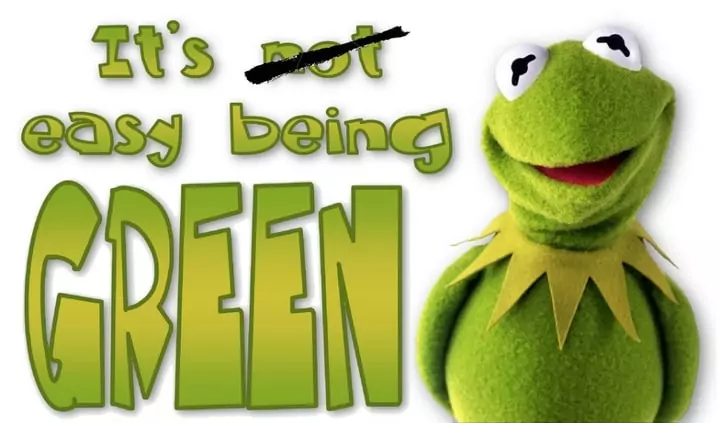
Eco-friendly Kermit
1. Production goes "green"
Set the tone by labeling your project a “green set”
Psychology shows that if you label something a certain way, it becomes a self-fulfilling prophecy. If you want to make green film production a reality, the first thing to do is take ownership of that fact.
By announcing your production is going “green,” you will inspire your cast and crew to get behind it.
2. Environmental Steward or eco manager
Hire or designate an Environmental Steward to take lead
The most important way to make your set sustainable is to designate an individual to be responsible for it.
Directors, Producers and Production Designers are going to be busy trying to tell the story, so if you have someone on the crew entirely focused on this, results are staggeringly higher.
Once again, this gives your crew a validation that the production is serious about going green. It also provides an on-set resource for someone to answer any questions about what they should be doing.
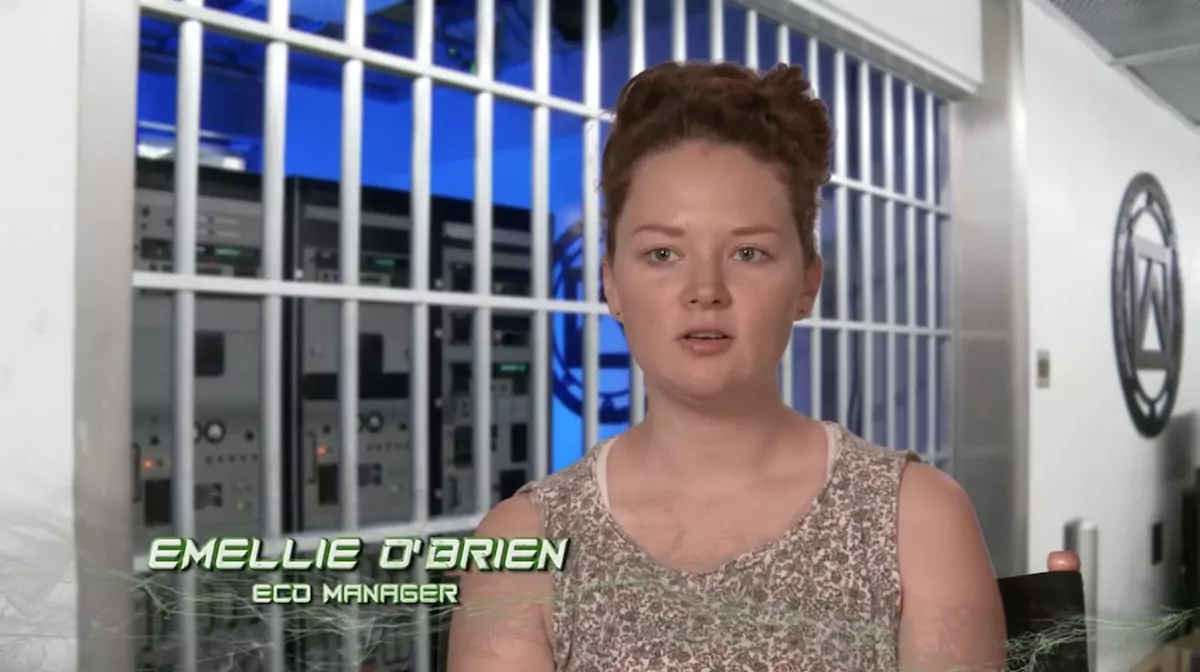
Emelie O’Brien, Eco Manager on The Amazing Spider-Man 2
The Environmental Steward will be the person’s only role, but depending on the scale of your production you may have to designate the Production Manager or another individual as the one who is responsible.
Regardless, they should be knowledgeable and passionate about environmentalism and willing to exert extra effort to make green film production a reality.
3. sustainable filmmaking
Learn from online resources
A Google search for “sustainable filmmaking” leads to an abundance of great resources. The information is out there if you look for it!
If you're a production company that creates content regularly, you will be able to save a ton of money over just one year by going green.
4. Financial INcentives for films
Apply for grants/incentive programs for a financial reward
All across the nation there are many tax deductions and financial incentives for film sets going green.
Look for resources in your area during pre-production and see if they will award a grant or reimburse for any environmental measures taken.
5. Fun Incentives for being green
Excite people during safety and production meetings
Right after you tell your crew to silence their cell phones and to keep up the good work, give your Eco Manager a chance to remind people that you are working on a green set.
Make sure that the message is always positive and never nagging – if you can, come up with fun incentives for being green. Gift cards, swag, re-usable water bottles, even a shout-out on set makes a difference.
6. reusable bottles
Ban plastic water bottles
Plastic water bottles are not environmentally friendly, and while they might seem like the most convenient option when you’re in line at Costco, they will undoubtedly cost you more than alternative options. Another downside of plastic water bottles is that they end up everywhere! This is a problem that is easily solved by not purchasing plastic water bottles and instead going the reusable route.
Instead, order reusable jugs of water that are refillable and don’t require individual packaging. On your call sheet, remind every crew member to bring their own reusable bottles to set (or provide your own). This may take some by surprise but will instill great habits for the future.
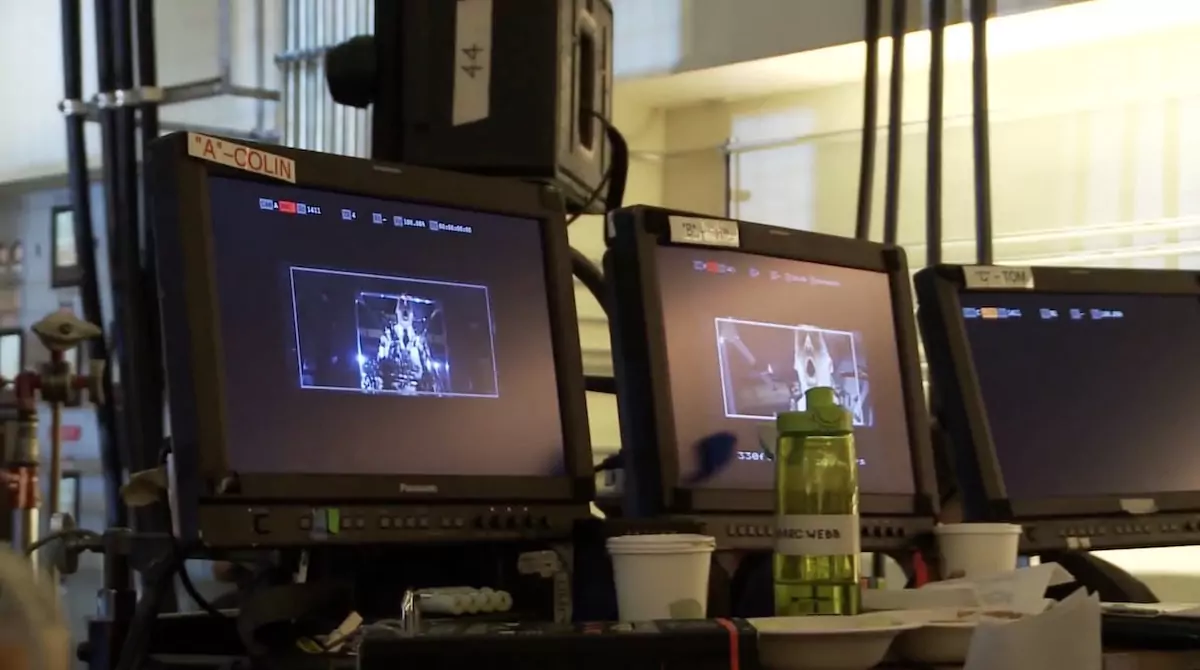
Green water bottles being used on the set of The Amazing Spider-Man 2
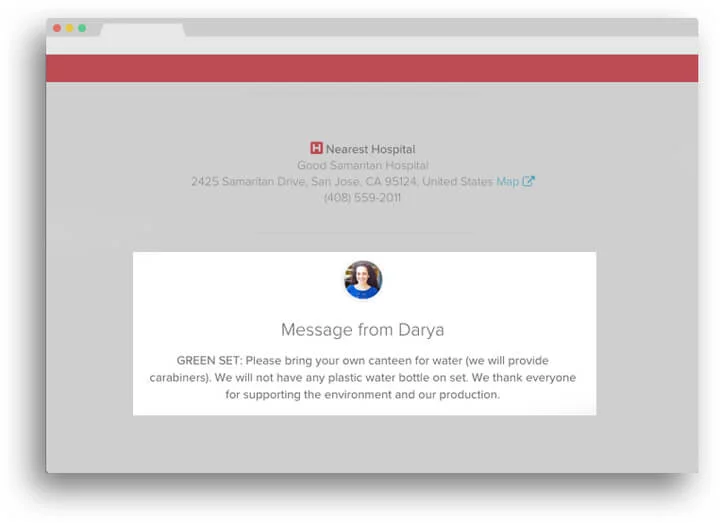
Green Set Reminder
Send out announcements that your production is going green. We use StudioBinder's callsheet builder to add messages to the call sheets.
7. local restaurants & catering services
Find local restaurants & catering services for lunch
Every day of filming you are going to be spending a great deal of money on feeding your crew, and with doing so you are voting with your wallet.
Do you get lunch from the mega-corporate chain or do you find a local restaurant that sources staples from the area?
Sometimes it can be easy to go with what people already know, but with just a little extra initiative you can find some great spots in the area.
You’ll not only be more likely to get a healthier meal, but you’ll be benefitting the local community as well.
8. Go paperless when possible
Find digital alternatives
Film productions thrive on printing endless stacks of paper, but we’re living in a progressively more digital world. Most cast and crew prefer digital alternatives when possible — this is an obvious win-win for green film production.
Rather than printing paper, ask yourself if a digital copy would be just as effective (or preferred). Adopt digital policies for e-signature application, backup files in the cloud, share Google Docs links rather than print outs.

Instead of paper go digital
Even in StudioBinder’s case, we’re big believers in being green (hence this article). As an example, we enable productions to go more green using software to create and send call sheets.
The idea is to cut back on all the paper print outs. Do we really need to print 50-100 copies of a call sheet every day when you can just send as easily send a mobile-friendly version?
We’re not saying don’t bring backup copies…just not so much.
Every step adds up.
9. Trash Reclycling
Designate trash, recycling, composting
Make clear distinctions between where the trash goes and where recycling or other non-trash can be placed.
At the end of meal time, when most of the waste will be accumulated, have your environmental steward or an equivalent person stand by the trash and help people to know the differences.
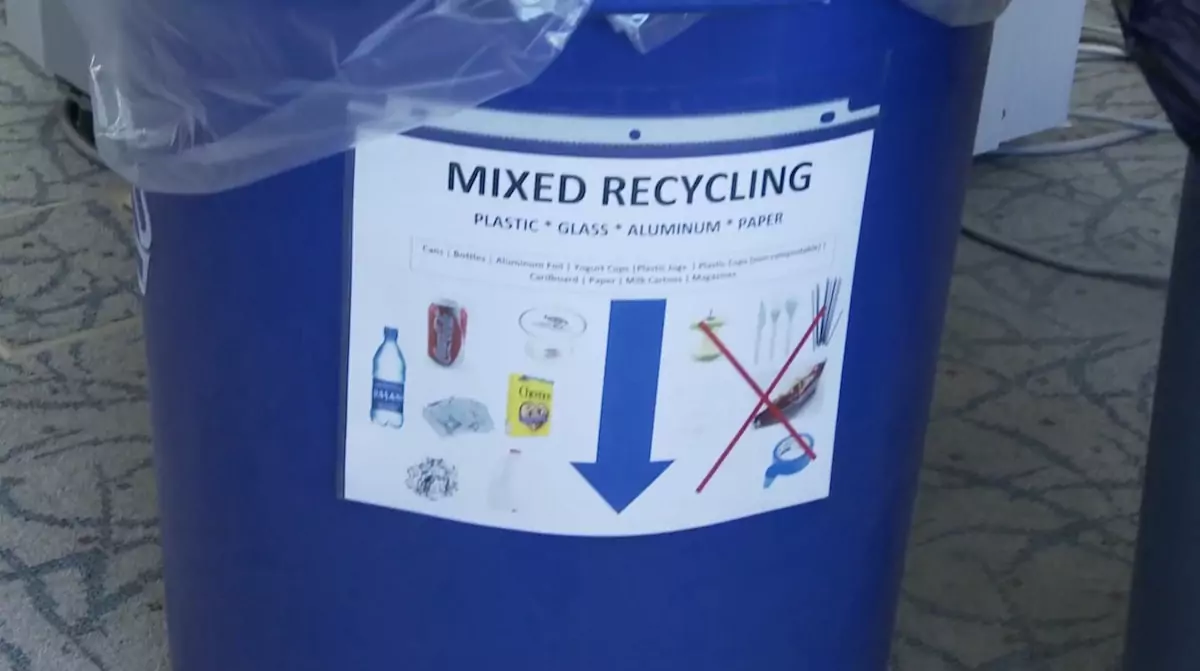
mixed recycling bin
Trash, mixed recycling
Plastic utensils are almost as bad as plastic water bottles. Compostable silverware is easily available and a great alternative.
Coordinate with your caterer on this: often times even local restaurants will use styrofoam and plastic, so be upfront with them about what you want to use (offer to skip on their complimentary utensils if need be).
Some locations do not have nearby composting, but if you can find a place to dump your compost, by all means do so.
10. Carppool
Reduce emissions with carpools
Everyone is headed to the same location, and most of the crew will be stationed there all day. Have your Environmental Steward figure out where everyone will be coming from to see who lives nearby.
Coordinate individuals who are willing to drive others, and do as much as you can to fill up each car.
For remote locations, have a designated meeting spot closer afield where people can park, then fill up fewer cars to reach the location.
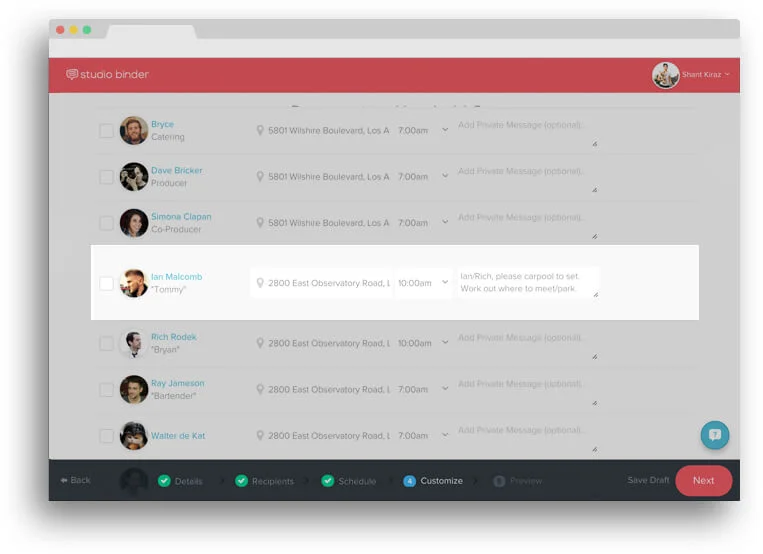
Studio Binder Personalized Message Call Sheet
Cut back on carbon emissions. Send personalized notes to a specific cast/crew member with carpooling instructions.
11. Conserve energy
Power down when not in use
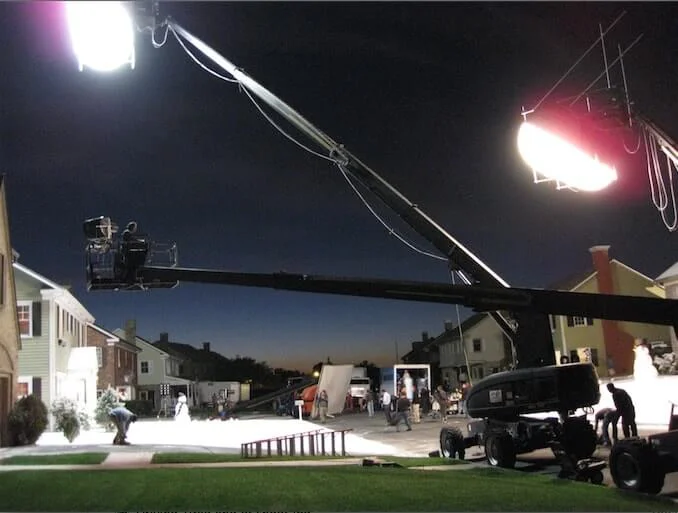
Conserve Energy - Power down when not in use
Communicate with your gaffer and G/E team to ensure that lights are unplugged and turned off when not in use.
At lunch especially, there is no reason to leave the lights on. If you’re using a laptop on set for production purposes (not for DIT), keep it unplugged, and charge up again when the battery gets low.
12. Digital communications
Use Skype for long-distance meetings
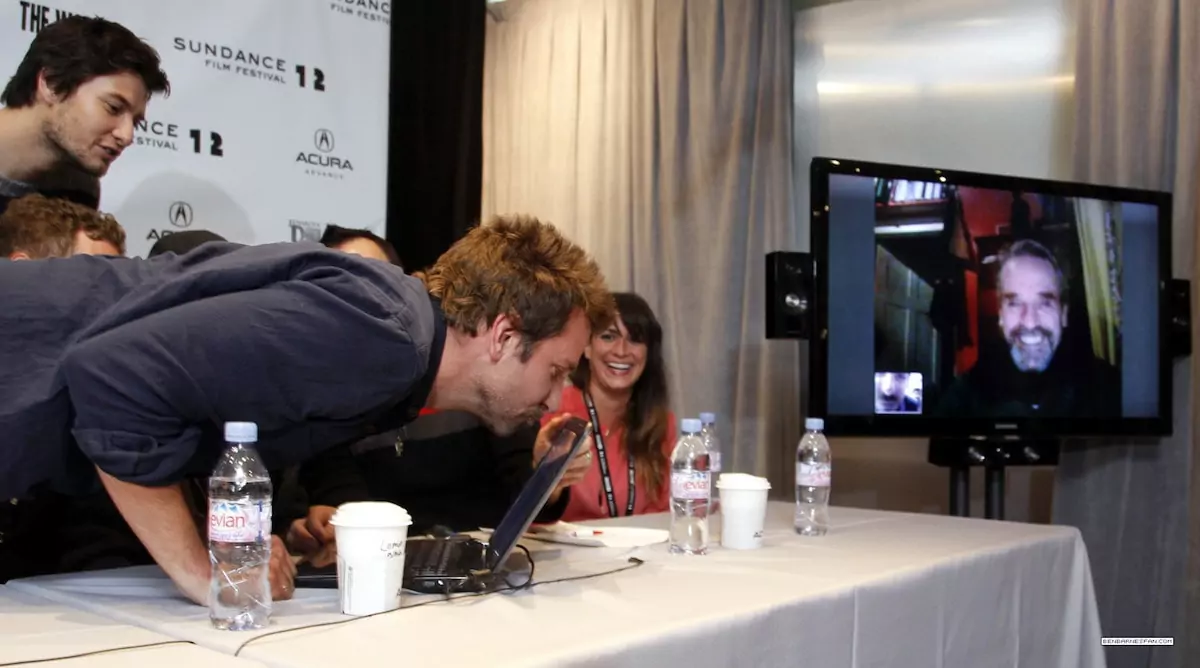
Digital communications - use skype for long distance meetings
Obviously there are times where in-person meetings are absolutely essential. That being said, consider using Skype or UberConference when you can. Not only does it cut back carbon emissions driving somewhere, but it saves on travel costs and time sitting in traffic. It won’t be for every meeting, but consider it for some!
13. Sustainable filmmaking resources
For the especially dedicated: pay for carbon offsets
This is understandably a major sign of devotion, especially for a low-budget production, but if you’re looking to display your passion toward sustainable and green film production, investigate further.
Keep a log of all the mileage and gas your crew has been using, and something similar for electricity. Carbon Fund and other websites can help you figure out all data you need to track, and how much you should expect to pay. If you are going to do this, do all of your research in advance and plan accordingly to avoid missing or incomplete information.
FURTHER RESOURCES
Here are a few more articles and resources that you can use or share with your crew:
- CMSI
- Green Filmmaking
- Green Production Guide
- Find Green Vendors
- Books on Green Filmmaking
- Downloadable Carbon Calculator
- Movie Maker’s Article ‘Mindful Moviemaking’
- CMS Code of Best Practices for Sustainable Filmmaking
- UCLA’s Southern California Environmental Report Card, (2006) on Film and Television
- LA Times ‘Greener Film Shoots’
up next
Conclusion
In no way is this all you can do to be a sustainable filmmaker. Remember that green filmmaking is a relatively new concept, and you can be a trailblazer in the efforts you produce.
Lastly, one of the best benefits of running a green set is that every member of the crew will walk away with a new mindset or experience, one that can create a ripple effect for future projects they are involved in. There is so much more we need to do to conserve the environment: let your next film set be a catalyst for moving in the right direction!

